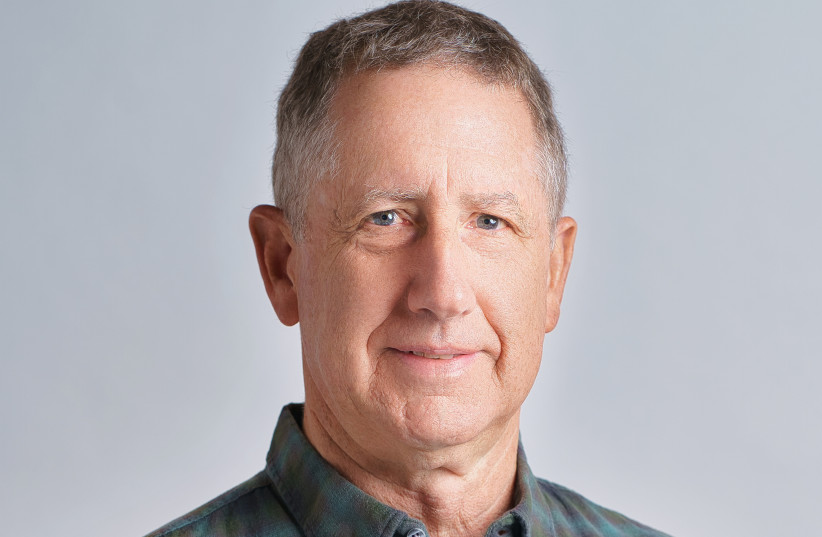As Artificial Intelligence develops races along at a breakneck pace, one of the latest trends to appear earlier this year is the emergence of AI-produced art, or “synthetic art.”
Platforms such as DALL-E and Midjourney have taken a fair share of social media attention as they enable users to generate images based solely on text prompts, resulting in artwork that is sometimes beautiful and sometimes outright bizarre (such as the image, “Six Muppets Fighting Over a Copy of the Jerusalem Post”).
Professor Yoav Shoham is a professor of computer science at Stanford, In addition to founding several companies that have since been sold, he founded the Artificial Intelligence Index and is co-founder and co-CEO of AI21 Labs, a company that uses artificial intelligence language models to change how people read and write.
In an interview with the Jerusalem Post, Shoham explained the advancement of AI art and its philosophical ramifications, beginning by explaining how Natural Language Processing (NLP) has advanced the evolution of AI, and how it has led to much more complex AI systems.
“NLP seems inherently tied to progress in AI because it captures complex human thinking. The previous decade was sort of the decade of ‘machine vision’: of computers that are looking at pictures, and understanding what they’re seeing. It turns out that that’s an ‘easy’ problem, [compared to understanding text].

“I often say that machine vision is the language of the human eye, and natural language is the language of the human mind: there's nothing as subtle and complex as explaining something with words — so to understand text is to understand thinking.
“Really, you didn't see a lot of progress in NLP until about five years ago. [Before then], you saw progress; but it was incremental… it didn't come close to human-level performance. And then, suddenly, something changed. And that something had to do with deep learning and neural net [advancements].”
Developers are currently making progress toward creating machines that are capable of producing “good art,” and in some cases, such as with AI-art generators like CrAIyon or DALL-E, they’re succeeding. Meanwhile, it seems like we’re still a long way away from AI that more accurately simulates human thinking. Could it be that AI’s right brain has leapfrogged its left?
“Something odd has happened. We used to say ’AI will progress in orderly reasoning and productivity — the stuff that's more organized — but when it comes to creativity, and thinking outside of the box, it'll be a while.’ And what’s happened is sort of the reverse. We see that when you try to apply AI to, for example, help you write, that's hard. Whereas creating art is easy.
“In hindsight, it sort of makes sense, because if I'm going to help you write a memo to your boss, I’d better get it right; but if you ask me to draw an elephant in the Sahara Desert, [there’s no real] definition of ‘right.’ There's the aesthetic sense which creates so many degrees of freedom, and I could pleasantly surprise you with all kinds of things that you would look at and say ‘oh, this is creative.’”
Can a computer ever be truly “creative”?
“So first of all, I think nobody has a definitive answer. A lot of it is a matter of perspective and judgment — but let me quickly share mine.
“I used to teach a freshman seminar at Stanford called ‘Can computers think; can they feel?’ and at its very first meeting I posed six questions and asked the students to vote yes or no, with no hedging or clarifying questions. The questions were, ‘Can computers think? Can they understand? Can we be creative? Can they have feelings? Can they have free will? Can they be conscious?’ I ordered the question deliberately that way to seem more and more counterintuitive.
“At the end of the seminar, I would ask them to vote again on the very same questions. And invariably, the students were more charitable to computers by the end. They started [the year] by saying ‘a computer can't be creative, it just does what it was told to do,’ but by the end they were unsure of themselves.”
If AI has the potential to be creative, what does that mean for humans and the future of what's considered art?
“You're now in a realm where there are no good answers — the jury's out.
“One of my colleagues said about general medicine that AI won’t replace radiologists, but radiologists who use AI will replace radiologists that do not. My sense is that the design space of images is so vast that you need human intuition and ideas to craft art that’s deeply meaningful. But I wouldn't be surprised if even high art will be aided — but not replaced — by AI tools.”
